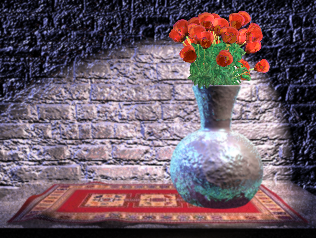Shadows work with lights to add realism to your scenes. Shadows help to define the location of objects, whether they rest on the ground or hover in space, for example. Shadows can be soft-edged or hard-edged, and their presence (or absence) can be used to add balance and contrast to objects in your scene.
To create a shadow, a scene must contain a shadow-casting light, a shadow-casting surface, and a shadow-catching surface. The light must illuminate both the shadow-casting surface and the shadow-catching surface.
Default shadowing

By default, lights in Maya Creative cast shadows. With the exception of ambient lights, all lights enable ray trace shadows by default (Use Ray Trace Shadows is enabled under the Raytrace Shadow Attributes section of the Shadows section of the light Attribute Editor.) You can disable shadows by disabling this attribute. Too many shadows can clutter your scene and take time to render; therefore, you may want to use as few shadows as necessary.
If no lights in your scene cast shadows, all surfaces facing a light source are illuminated, even if obstructed by another surface. (When light shines on a surface in Maya Creative, the parts of the surface facing toward the light source appear illuminated, and the parts of the surface facing away from the light source appear dark.)
You can, however, add shadows by controlling which combinations of lights and surfaces can produce shadows. Typically, you only want a few specific lights and surfaces to produce shadows. By limiting shadows only to these specific lights and surfaces, you can help reduce rendering times.